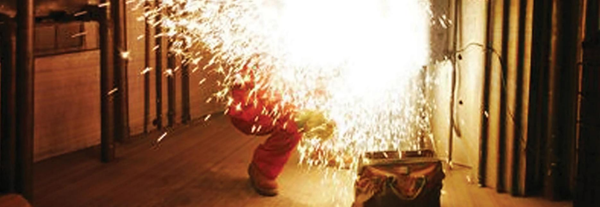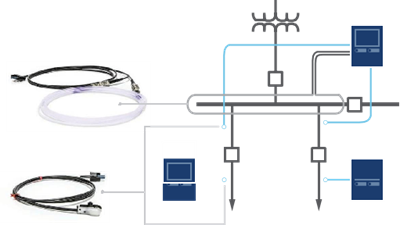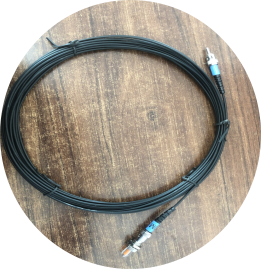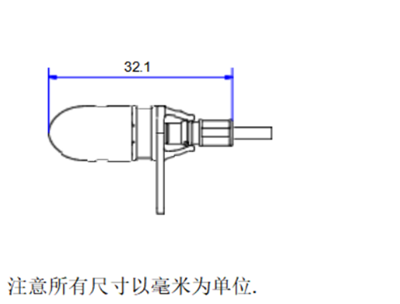Arc flash protection solutions
What is an arc flash?
Human safety is critical to utilities and industries, including oil, gas, water, wastewater, and metals and mining.
Arc flash is a hazardous situation with a release of energy.
The energy from an arc flash event can cause injury.

How is the arc generated?
Arc flashes occur when the insulation or air separation between energized components within a circuit is compromised. Arc flash events can be caused by a number of factors, such as a two-phase short circuit, which can cause phase-to-phase faults. Common examples of causing phase-to-phase failures include dropped tools, accidental contact by maintenance personnel, build-up of corrosion or conductive dust on conductors, and the presence of pests, such as rats, or snakes, that come into contact with energies.
Danger of Arc Flash
Arc flash events can result in dangerous and potentially lethal heat, ultraviolet radiation, explosion pressure, flying shrapnel, and deafening sound waves.

How to solve such problems?
Arc protection at the speed of light:
Protect people and equipment
• Technology and overcurrent detection
• To reduce the likelihood of injury
• Reduces arc incident energy levels by up to 88%
• To increase safety and minimize equipment damage
• Safely detect arc flash by using a combination of light sensors
• Install into new systems or retrofit into existing equipment for everyone
• Detect arc events and send trip signals in as little as 2 ms

Benefits of Arc Flash Protection
1. High speed trip:
Relays reduce the risk of arcing by reducing overall troubleshooting time.
2. Reduce accident energy:
The faster the arc flash event disappears, the lower the incident energy. The relay detects an arc flash hazard and sends a trip signal to the circuit breaker within 2 ms.
3. Improve security:
Arc-flash detection reduces fault clearing time, reduces arc-flash hazards, and improves safety. To verify arc-flash protection performance, a series of tests were conducted in a high-current laboratory. During these tests, the arc flash
Using technology, incident energy levels were reduced by 88%.
4. Reduce damage to switchgear:
With Arc Flash Hazard Protection, equipment damage can be minimized during an arc flash event, allowing affected equipment to be restored faster and at a lower cost. In addition, the availability of the power system is maximized.
5. Maintain selective coordination:
Arc flash events trigger immediate response while coordinating with external protection for downstream faults
6. Stay outside the danger zone:
Get metering, event and maintenance information remotely from the relay via Ethernet or serial communication to maintain a safe distance. An optional delay circuit breaker trips or closes at the push of a button, allowing personnel to move to a safe distance.

Above is the switchgear contactor after a 5 kV arc flash event, during which conventional overcurrent protection was applied. Damage requires replacement of contactors, fuse clips, copper busses, cables, control wires, disconnects and hardware.

Shown here (before any cleanup is done) is the inside of a switchgear protected by SEL light sensing and overcurrent protection during a 6.6 kV arc flash event. Damage is limited to arcing on the cable termination bolts.
Arc protection solutions
Bare fiber sensors detect light from arc flashes over the entire length of the fiber loop. This type of sensor is used for large areas,
Easy-to-install point sensors such as busbars detect light from arcs. This type of sensor is used in areas such as closed circuit breaker rooms.

Shenzhen Jinzhi Optoelectronics Technology Co., Ltd. provides induction series products for arc protection solutions
1. Jinzhi provides: light detection point sensor
Model:KINZ-CG01&KINZ-CG02
Plastic Fiber Optic Connectors for Point Sensors


Application
Arc Flash Event Detection
light detection
Describe:
KINZ-CG01 is an optical point sensor with self-supervision function.
The light that meets the point sensor is captured and fed into a plastic optical fiber (POF). The self-supervision function is achieved through the built-in coupling between the two fibers.
KINZ-CG02 is a miniature connector
For connecting duplex POF cables to point sensors. The special sensor design based on POF allows system engineers to avoid any galvanic contact between the arc flash area and the detection electronics.
Both KINZ-CG01 and KINZ-CG02 are part of a comprehensive arc inspection product portfolio. In combination with sensor transceivers, they are designed to detect arc flash events in electrical grids.
Sketch:
Dimensions
KINZ-CG01 KINZ-CG02 Assembly of KINZ-CG01 and KINZ-CG02


1) Sensors, connectors, optical cables, and jumpers for V-pin interface are as follows:

Sensor (induction + fluorescence + accessories) connector fiber optic cable Avago jumper
2) Sensors, connectors, optical cables, and jumpers for ST interface are as follows:
Corrosion resistant and durable
Low insertion loss
Available Types: Assembled
Complete set of connectors or provide
Assembled Connector Parts

Sensor (induction + fluorescence + accessories) fiber cable SC-ST jumper ST-ST jumper

ST (BFOC POF) Plastic Optical Fiber Pigtail ST tail black fiber ST tail orange fiber ST high temperature arc light fiber optic cable
3) The sensors, connectors, optical cables and jumpers used for the SMA905 interface are as follows:
Corrosion resistant and durable
Low insertion loss
Available Types: Assembled
Complete set of connectors or provide
Assembled Connector Parts

female head probe sma905 connector ST connector

Female assembly fluorescent fiber sma905 orange patch cord ST-ST orange patch cord
Welcome to browse our company's solutions related to industrial applications.
If you need further understanding of technical knowledge and product information,
the contact information is as follows: Toll free: 400-160-8187
Email: sales@kinz-pof.com Website: www.kinz-pof .com





















































